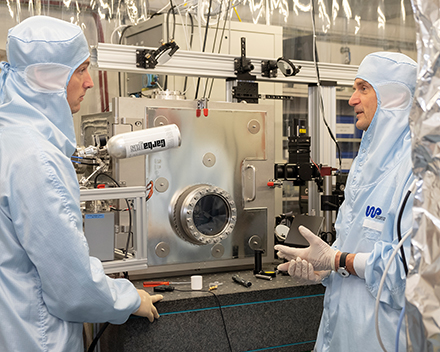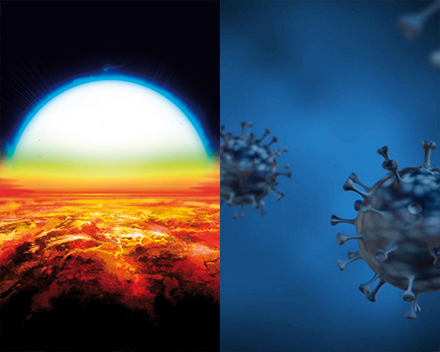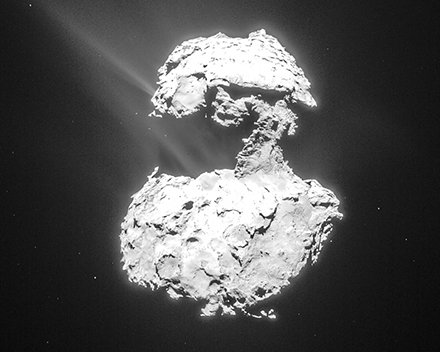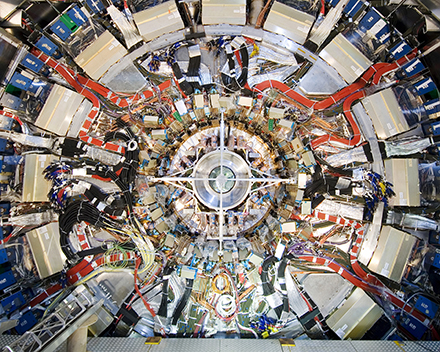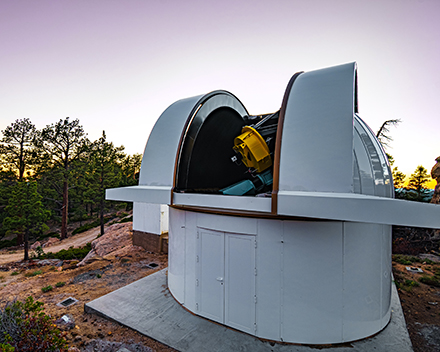Key area
Matter and the Universe
The University conducts cutting-edge research in theoretical and empirical particle physics, the formation and development of planets and planet systems, and the search for life in space. In 2020 the University of Bern showed Switzerland and the world what it can do and its achievements in these areas:
- What researching planets has to do with the coronavirus: The newly founded platform INPUT aims to support interdisciplinary research
- In 2020, several studies based on ROSINA data were published, providing new insights into the comet Chury and on the formation and development of our solar system.
- The “SAINT-EX” Observatory, led by researchers from the National Centre for Competence in Research NCCR PlanetS of the University of Bern and the University of Geneva, detected two exoplanets orbiting the star TOI-1266 in 2020.
- Researchers from the University of Bern are making the ATLAS particle detector on the world's largest particle accelerator – the LHC at CERN – fit for the search for “new physics”.
- Space made in Bern: Last but not least, space instruments such as the CHEOPS space telescope, the ORIGIN mass spectrometer and three instruments for the Jupiter mission JUICE also caused a stir.
